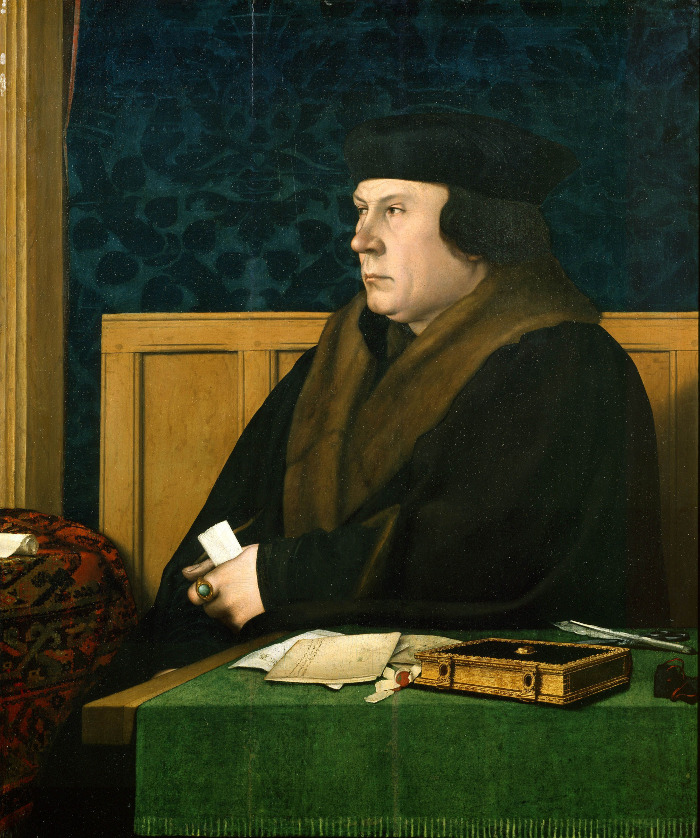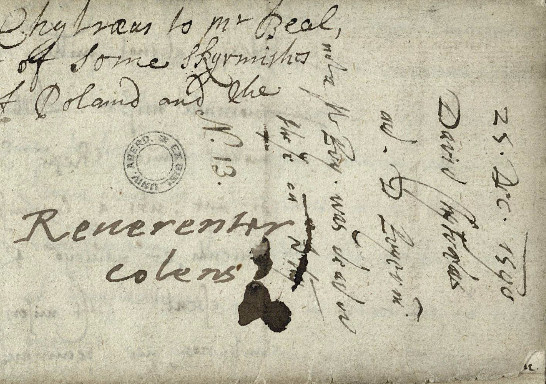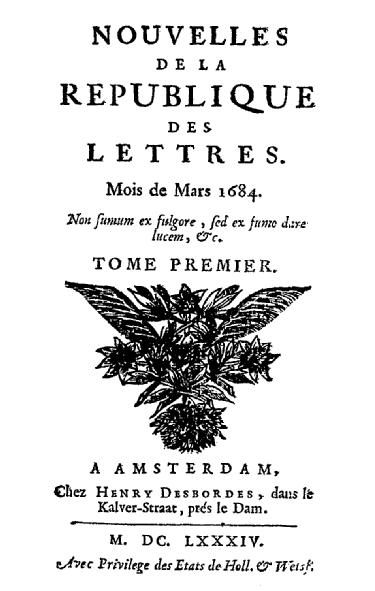‘Wherefore, in the honour of God, let me not be forgotten, but with diligence tender my pains, as I shall be ever your beadwoman, and surely deserve your goodness, if God make me able, whom I beseech to preserve you ever in much worship.’ Thus wrote the English nun Margaret Vernon in a letter of 1528 to Thomas Cromwell. Twenty-one letters, dating between 1522 and 1538, from this remarkable abbess to her increasingly powerful patron are known to have survived, and now a catalogue with a calendar compiled by Professor Mary J. Erler during the course of research for her publication Reading and Writing During the Dissolution: Monks, Friars, and Nuns 1530–1558 (Cambridge University Press, 2013) is available in EMLO.

Thomas Cromwell, by Hans Holbein the younger. 1532-33. Oil on panel, 78.4 by 64.5cm. (Frick Collection, New York; source of image: Wikimedia Commons)
Margaret Vernon held the position of superior in four religious houses in the south of England: Sopwell Priory; St Mary de Pré (these were both in St Albans, Hertfordshire); and, consecutively, Little Marlow (Buckinghamshire) and Malling Abbey (Kent). Her letters, the manuscript originals of which may be found in either the State Papers at The National Archives, or MS Cotton at the British Library, span the career of a woman forced to navigate times of unprecedented religious turmoil and upheaval. They reveal a lengthy relationship forged with Cromwell, beginning in the early 1520s before his meteoric rise while he was in the service of Cardinal Wolsey. During these years, Cromwell seems to have acted as financial adviser to Vernon, who was at that point head of Little Marlow. Some of the letters chart Vernon’s unsuccessful negotiations to become prioress of St Helen’s Bishopsgate, London, the position she had been promised by Wolsey. Other letters cover the period during which Cromwell entrusted his only son Gregory to Vernon for his early schooling. And a number of the letters convey the desperation of the abbess at the imminent closure of both Little Marlow and, subsequently, Malling. Remarkably, in 1538, when the dissolution of the latter seemed unavoidable, Vernon requested permission to sell one of the manor houses associated with the priory, thereby to secure a pension for herself and her nuns. This was not to be, however. Vernon and her community were duly laicized, and the pension she received — less than requested — may be traced until 1546, six years after the execution of her once all-powerful patron.
Those who have followed EMLO over the past summer will know that, following the exciting launch of WEMLO, the resource and discussion forum for all early modern women’s correspondence, they will be able to search this abbess’s letters alongside the growing body of women’s correspondence within EMLO. For those who missed the launch, or who are visiting the union catalogue for the first time, we urge you to explore! Meanwhile, behind the scenes, metadata for increasing numbers of new correspondences are in preparation at EMLO and we’re truly delighted to reveal that the imminent addition of catalogues for a selection of key significant and powerful sixteenth-century women will allow Margaret Vernon to be viewed in a richer context still.


 The Library has generously made available digital images of the manuscripts, and users will find links to these from each letter record in EMLO. Dr Gordon has included metadata from the earlier researches of James D. George (1906–1977), a former secretary of
The Library has generously made available digital images of the manuscripts, and users will find links to these from each letter record in EMLO. Dr Gordon has included metadata from the earlier researches of James D. George (1906–1977), a former secretary of  to bring together students, curators, digital experts, and original manuscripts. The aim is to produce student-curated catalogues of hitherto unpublished letters. Undergraduates and postgraduates are invited to attend standalone sessions in a series of workshops at the
to bring together students, curators, digital experts, and original manuscripts. The aim is to produce student-curated catalogues of hitherto unpublished letters. Undergraduates and postgraduates are invited to attend standalone sessions in a series of workshops at the 